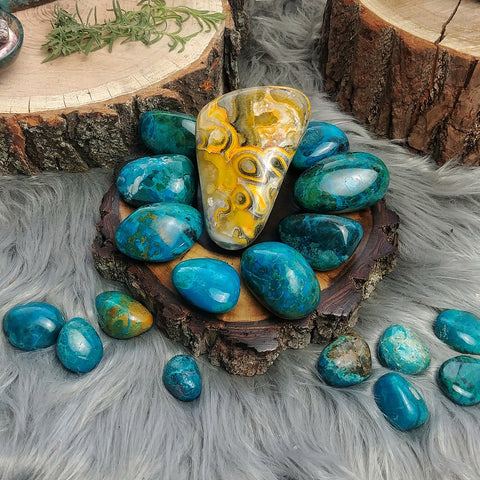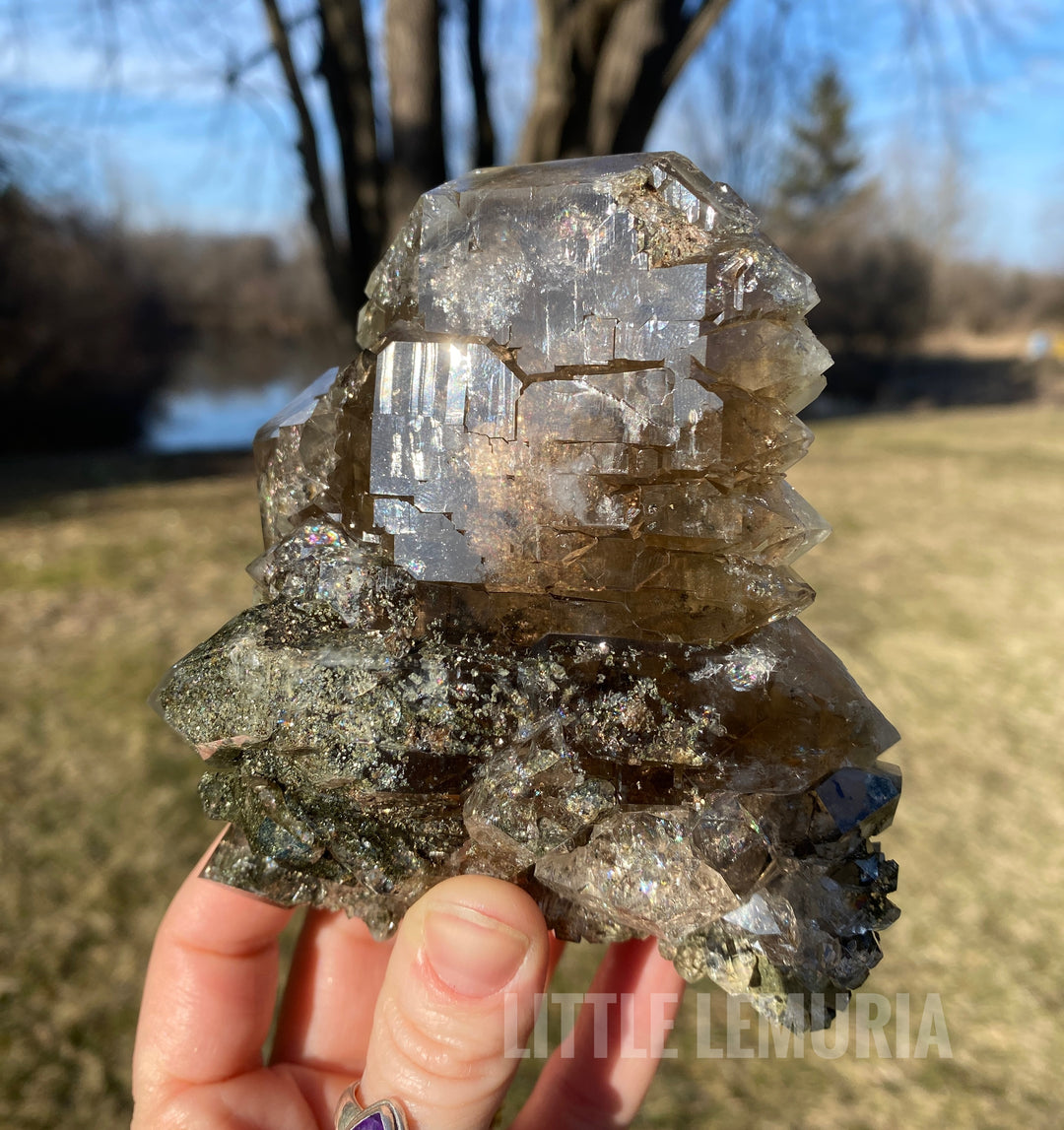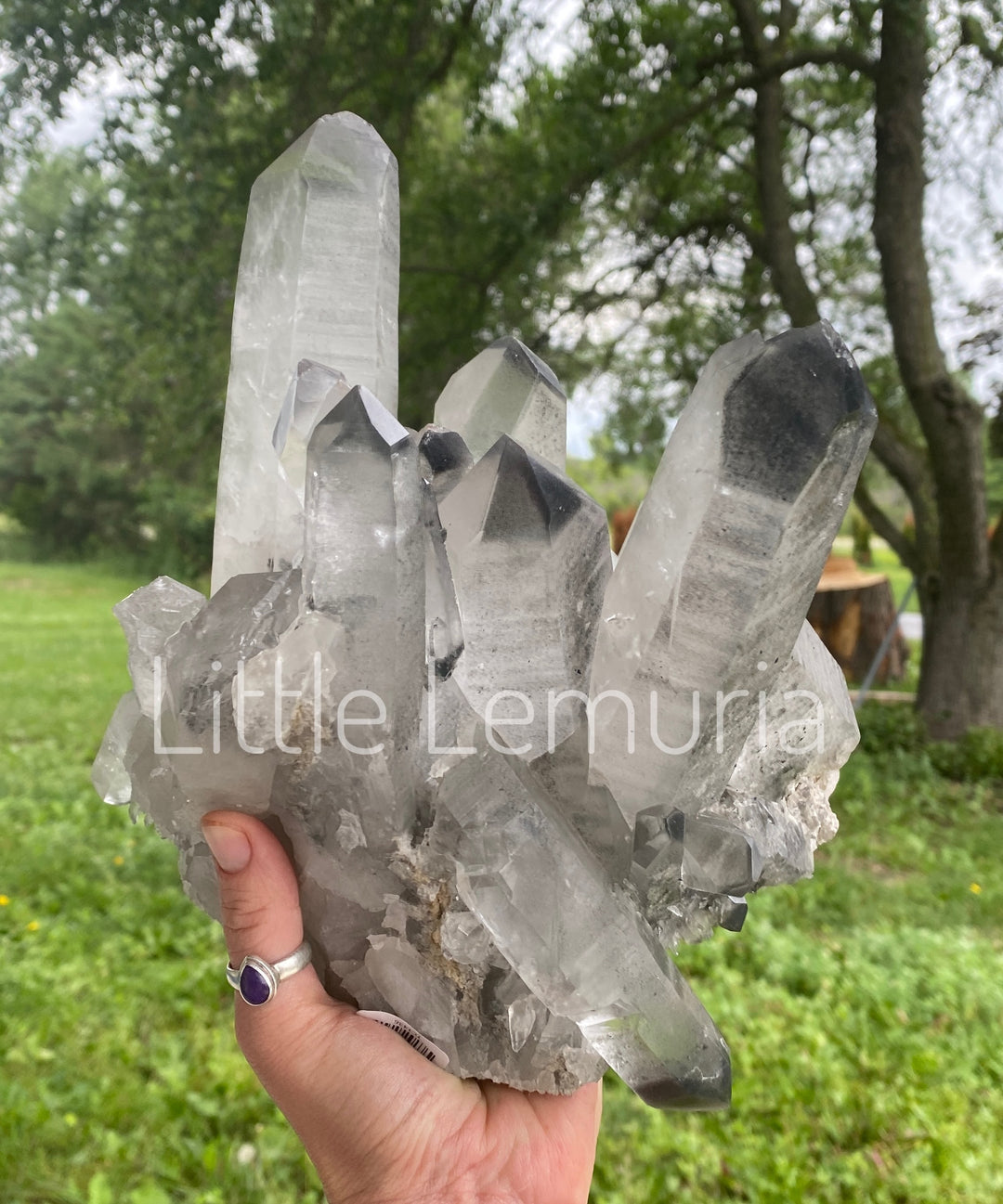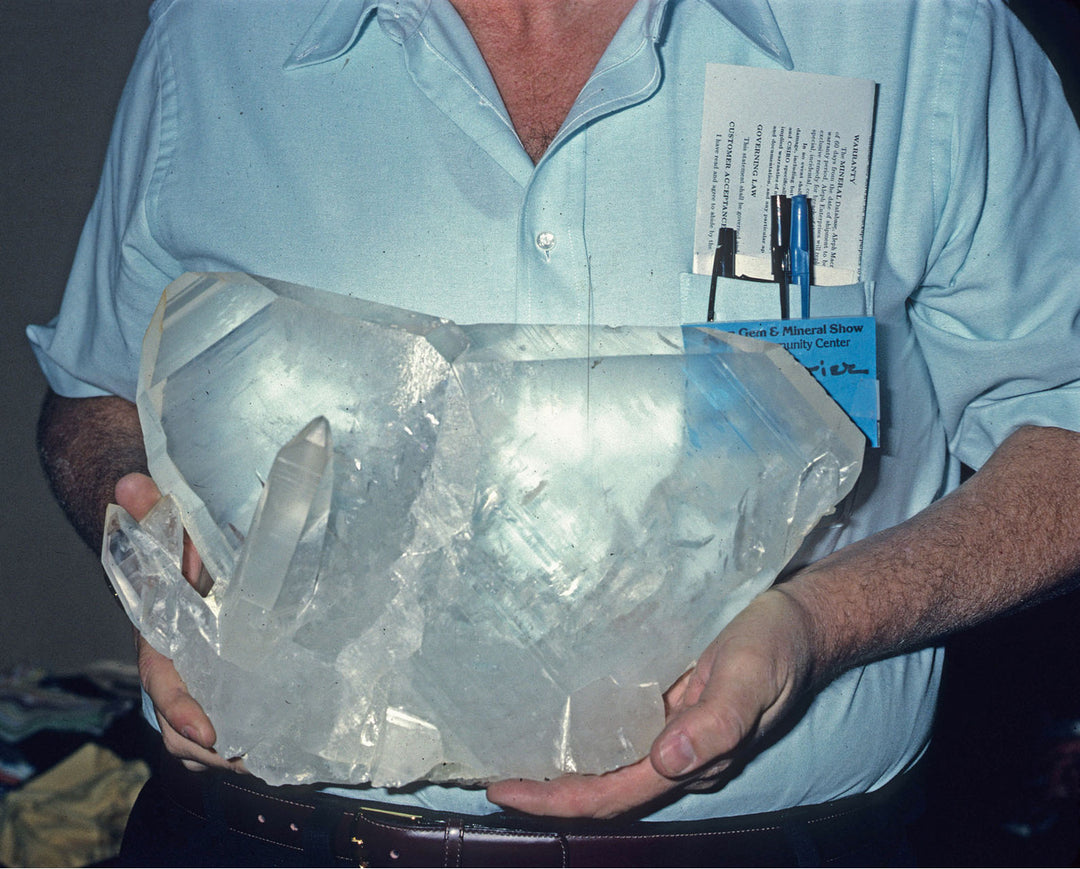Potion or Poison?
You see gem water bottle advertisements throughout social media and search engine results, but have you stopped to consider the costs and benefits of this drinking water trend? What started out as one overpriced glass bottle has turned into a sea of knockoffs that are not only questionably designed but include toxic and dangerous stones. It’s alarming that manufacturers do not consider their customers’ health and safety. It is up to us as consumers to protect our bodies and minds from the water-soluble poisons in these gemstones.
A gem elixir is made by infusing crystals with drinking water to extract their “healing properties” into the water. These elixirs are usually consumed like regular drinking water, but they can also be used topically on the skin, or in a micro dose placed under the tongue.


One website makes this dubious claim about gem infusions: they “act like vitamins and other food complements, strengthening the body and making it healthy.” Others make statements about abolishing chronic fatigue, strengthening the immune system, and re-balancing unbalanced mind, body, and spirit energies.
It takes dedication to a healthy lifestyle and time focused on inner development to balance our energies. It is tempting to dabble in elixirs — everybody wants a quick fix — but without proper awareness of what gets introduced to the body, experimenting with elixirs could come at a grave cost.
An elixir, historically, is a magical or medicinal potion. The word has been used to describe preparations that were said to go beyond the boundaries of ordinary reality. Only recently has the term “elixir” been used to describe medicinal treatments and herbal remedies.
I’m not aware of any evidenced-based research supporting crystal elixirs’ supposed healing properties. Western medicine is not the only healing modality in the world. Setting one’s intention and manifesting health has worked for me, and crystals can serve as an aid in self-maintenance and personal growth.

There are three major types of gem water bottle design.
- Completely encapsulated. The stones do not touch the water. This is the safest bottle available. One design, pictured above, is available from the Australian company Longemity.
- This design allows water to enter the capsule that holds tumbles or other small stones at the bottom of the bottle.
- Completely exposed. These bottles are fitted with a polished tower inside, which completely exposes the stone to the drinking water. This tower-style bottle is the leading perpetrator I have seen being pushed on consumers, often containing crystal that is toxic and completely inappropriate for immersion in potable water.

Contemporary mining practices can be toxic! Cyanide and sulfuric acid are often used to separate minerals from ore in the mining process. Some rocks contain sulfides that, when exposed to water, can produce sulfuric acid on their own. In the mining industry, this is called Acid Rock Drainage, and runs the risk of contaminating neighboring bodies of water. Not only is acidity dangerous, but when the water reaches a certain level of acidity a type of bacteria called Thiobacillus ferroxidans can appear.

But mining isn’t the only way these potentially toxic stones make it into our bodies. Many stones are not appropriate for use in roll-on essential oil blends or oils meant to be diffused into the air. Some people say that small quantities placed under the tongue are safe, but why put your body at risk?
Both federal and not-for-profit safe-water organizations have been fighting heavy metal contamination for decades. According to the Safe Drinking Water Foundation, “heavy metal pollution is caused when such metals as arsenic, cobalt, copper, cadmium, lead, silver and zinc contained in excavated rock or exposed in an underground mine come in contact with water.” Most common tumbles contain some kind of metal.

This is no joke! Severe illnesses can be caused by common stones. Innocent people living near fluorite mines have experienced the devastating effects of fluorine leaching into their water supply. Fluorite is water soluble, and once it enters the body, it can cause skeletal fibrosis. This painful disease is rampant in rural India and China where regulations do not protect citizens from nearby mines.
Be aware that even the safest mineral can contain polishing compounds, oxalic acid, as well as muriatic acid from the cleaning and manufacturing process. Do not trust distributors to properly handle or clean the stones provided with these bottles. Make sure the stone is chemically stable and non-toxic before you put it in your body. You cannot trust the manufacturer to do this research for you! There is a water bottle on Amazon right now offering a fluorite tower included with the purchase of the bottle.
Minerals that can dissolve/change:
- Calcite
- Halite
- Hematite (rusts)
- Labradorite
- Magnetite (rusts)
- Selenite
- Obsidian
- Ulexite
- Angelite (also contains lead and sulfur!)
- Celestite
Minerals containing copper:
- Adamite (copper, arsenic, and zinc)
- Amazonite
- Ajoite
- Atacamite
- Aurichalcite (copper and zinc)
- Azurite
- Bronchantite (Copper Hydrated Sulfate!)
- Chalcantite
- Chalcopyrite (copper and sulfur)
- Chrysocolla
- Cuprite
- Diopside
- Dioptase
- Eliat Stone
- Gem Silica
- Lapis Lazuli (copper and sulfur)
- Malachite
- Mohawkite (copper and Arsenic)
- Quantum Quattro Silica
- Smithsonite (zinc and green variety contains copper)
- Turquoise (copper and aluminum)
Mineral containing Aluminum:
- Alexandrite
- Andaluscite
- Aventurine
- Celestite/Celestine
- Dalmatian Jasper
- Dumortierite
- Emerald
- Epidote
- Feldspar
- Garnet
- Hiddenite
- Iolite
- Jade (aluminum and iron)
- Nephrite Jade (Aluminum, iron, and titanium)
- Kunzite
- Kyanite
- Labradorite
- Lazulite
- Lazurite (aluminum and sulfur)
- Lepidolite (aluminum and lithium)
- Mica
- Moldavite
- Moonstone
- Morganite
- Muscovite
- Prehnite
- Ruby
- Sapphire
- Scapolite
- Schorl
- Sodalite
- Spinel
- Stilbite
- Sugilite
- Sunstone
- Tanzanite
- Topaz
- Tourmaline
- Unakite (may also contain radioactive Zirconium)
- Variscite
- Vesuvianite
- Wavellite
- Zoisite
Minerals containing HIGHLY TOXIC chemicals:
- Amber (Possible trapped bacteria or virii)
- Angelite (lead and sulfur)
- Aragonite (can contain lead)
- Actinolite (Asbestos)
- Atlantasite (Asbestos)
- Chrysoprase (Nickel)
- Cinnabar (Mercury) HIGHLY TOXIC! WASH HANDS
- Crocoite (Chromium) WASH HANDS
- Cuprite (Poisonous levels of copper) WASH HANDS
- Fluorite (Hydrofluoride Gas)
- Galena (Lead) WASH HANDS
- Gaspeit (Nickel)
- Garnierite (Nickel)
- Howlite (Boron)
- Indigo Gabbro (Barite and Iron)
- Kambaba/Croc Jasper/Stromatalite (Cyanobacteria and Cyanotoxins)
- Leopard Skin (Iron)
- Marcasite (can form sulfuric acid)
- Mystic Merlinite (Barite and Iron)
- Ocean Jasper (Iron)
- Orpiment (Arsenic) HIGHLY TOXIC! WASH HANDS
- Pietersite (Asbestos)
- Psilocelane (Barium)
- Pyrite (contains intermixed Marcasite)
- Realgar (Arsenic) HIGHLY TOXIC! WASH HANDS
- Rhodochrosite (Lead)
- Rose Quartz (Iron and Titanium)
- Serpentine (asbestos)
- Stibite (Lead)
- Tiger Eye (Asbestos)
- Tremolite (Asbestos)
- Ulexite (Boron)
- Vanadinite (Vanadium)
- Wulfenite (Lead and Molybdenum)
- Zircon (Zirconium)
This list is by no means a complete reference for all toxic minerals. The purpose of this list is to be used as a quick reference for minerals commonly found in hobby collections. Most of these minerals are safe to handle, but it never hurts to wash your hands after handling any mineral. Do not be discouraged if you feel drawn to using gem elixirs as part of your crystal loving lifestyle. There are a few safe and simple bottles on the market designed to keep toxins away from the water while allowing the beautiful colors, shapes, and energies of the crystals to be safely enjoyed.






